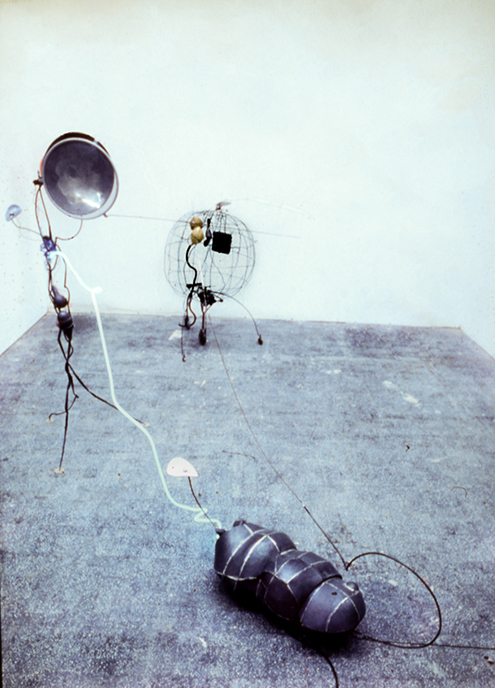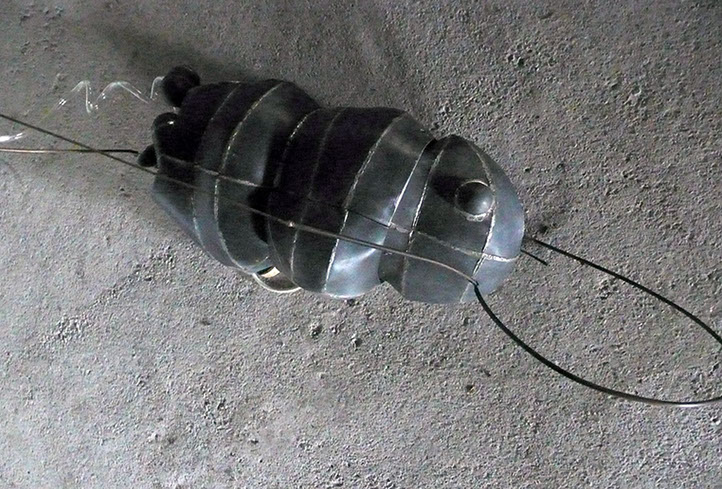






Nocturnal Courting Behavior: Lead clad Expeller (male) in the for ground and Receiver (female) at the opposite end of the glass neon connecting tube. The Sculpture in the center is Halibat c.1980, installed in Maidstone, England. 1981
Nocturnal Courting Behavior: Detail of the Receiver showing her independent lead covered sensors. Installed in Maidstone, England. 1981
Nocturnal Courting Behavior: Expeller (Male), soldered lead sheet, with high voltage transformer. 1980
Nocturnal Courting Behavior: General view of the installation. 1980
Nocturnal Courting Behavior: Detail of the Receiver. 1980
Nocturnal Courting Behavior: Early preparatory drawing, India ink and crayon on layout paper. 1979
Nocturnal Courting Behavior: Early preparatory drawing, India ink and crayon on layout paper. 1979
3 - 7
<
>
READ MORE
ABOUT NOCTURNAL COURTING BEHAVIOR (1980)
Nocturnal Courting Behavior of the Engaged Couple is a precarious relationship deemed attractive by a minority where one is a Receiver, the other an Expeller, together they form a common ground. Both are dependent on the absence of light to trigger their simple mechanisms.
The Expeller (male) is a lead clad (battery and transformer) energy source. His abdomen moves erratically and, fully extended, activates a solenoid which flicks his tail forward, carrying some 7000 volts direct current.
The female Receiver has a shield (mesh) covering a polished disc, this mesh moves away from the disc when the light level is low. Attached to the mesh is a copper protuberance.
When the male activates his tail it flicks forward and strokes the copper protuberance so completing the circuit and thus illuminating the translucent gas filled glass tube connecting the two amorous creatures. The two, on sensing the blue haze cast by their joint efforts, switch themselves off momentarily. The male restores his tease, once the light level has reduced its potency.
CLOSE






